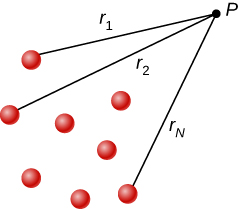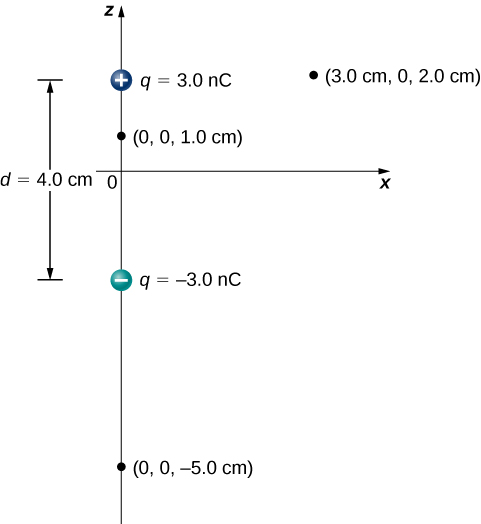| << Chapter < Page | Chapter >> Page > |
Check Your Understanding What is the potential inside the metal sphere in [link] ?
recall that the electric field inside a conductor is zero. Hence, any path from a point on the surface to any point in the interior will have an integrand of zero when calculating the change in potential, and thus the potential in the interior of the sphere is identical to that on the surface.
The voltages in both of these examples could be measured with a meter that compares the measured potential with ground potential. Ground potential is often taken to be zero (instead of taking the potential at infinity to be zero). It is the potential difference between two points that is of importance, and very often there is a tacit assumption that some reference point, such as Earth or a very distant point, is at zero potential. As noted earlier, this is analogous to taking sea level as when considering gravitational potential energy .
Just as the electric field obeys a superposition principle, so does the electric potential. Consider a system consisting of N charges What is the net electric potential V at a space point P from these charges? Each of these charges is a source charge that produces its own electric potential at point P , independent of whatever other changes may be doing. Let be the electric potentials at P produced by the charges respectively. Then, the net electric potential at that point is equal to the sum of these individual electric potentials. You can easily show this by calculating the potential energy of a test charge when you bring the test charge from the reference point at infinity to point P :
Note that electric potential follows the same principle of superposition as electric field and electric potential energy. To show this more explicitly, note that a test charge at the point P in space has distances of from the N charges fixed in space above, as shown in [link] . Using our formula for the potential of a point charge for each of these (assumed to be point) charges, we find that
Therefore, the electric potential energy of the test charge is
which is the same as the work to bring the test charge into the system, as found in the first section of the chapter.

An electric dipole is a system of two equal but opposite charges a fixed distance apart. This system is used to model many real-world systems, including atomic and molecular interactions. One of these systems is the water molecule, under certain circumstances. These circumstances are met inside a microwave oven, where electric fields with alternating directions make the water molecules change orientation. This vibration is the same as heat at the molecular level.


Notification Switch
Would you like to follow the 'University physics volume 2' conversation and receive update notifications?